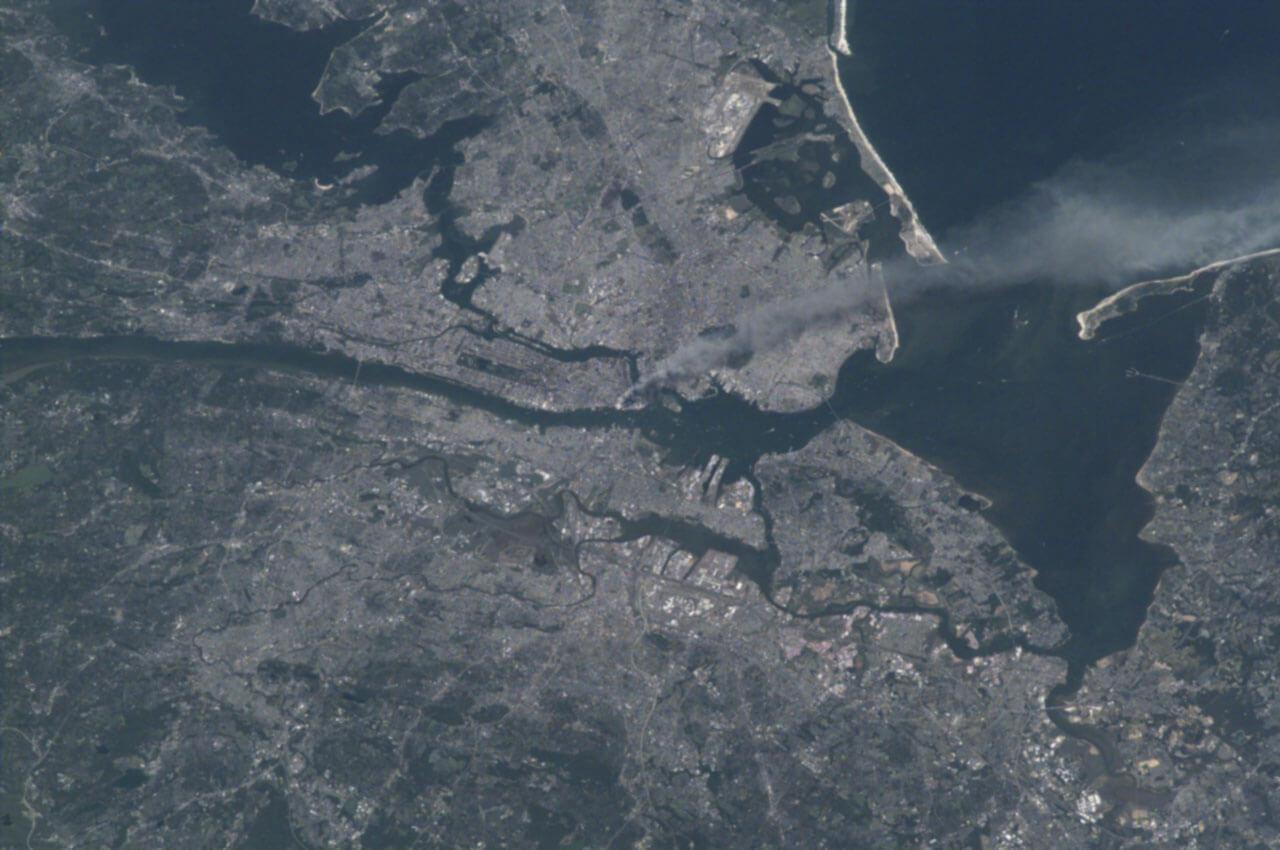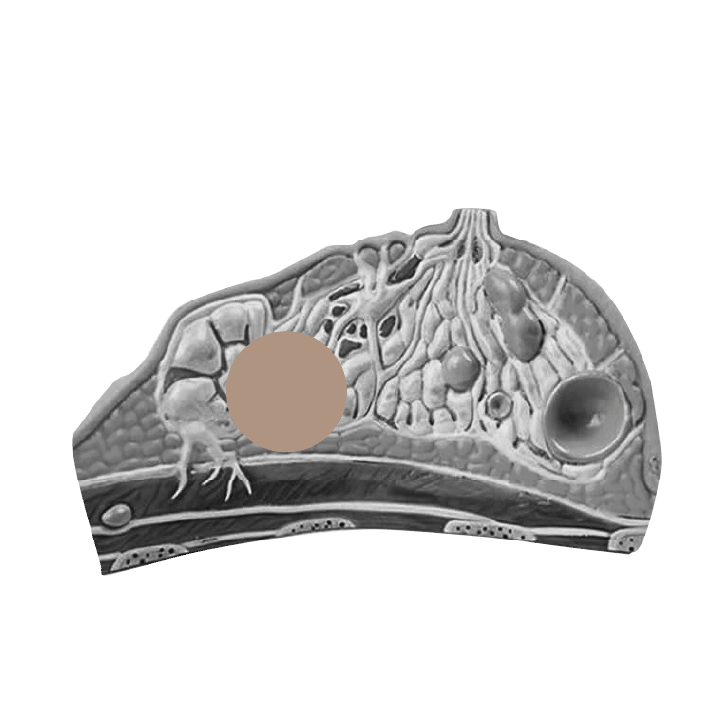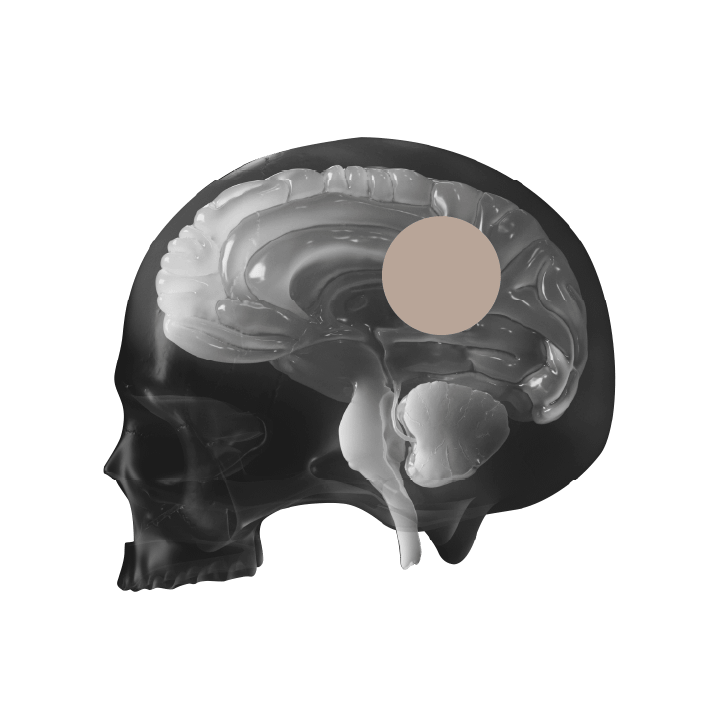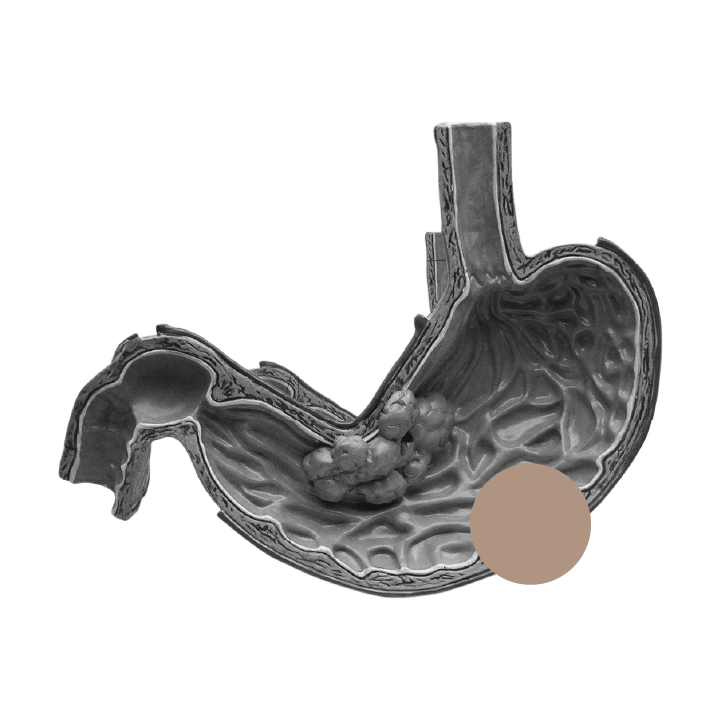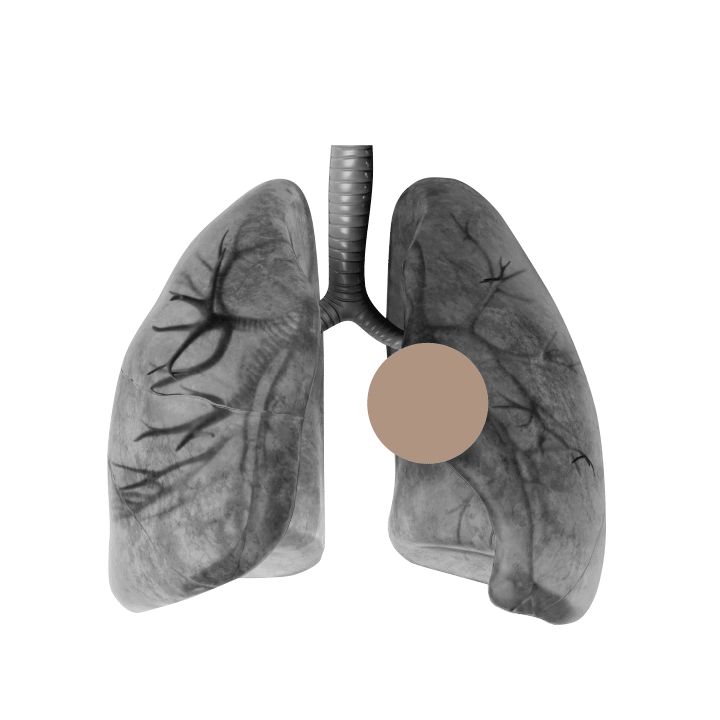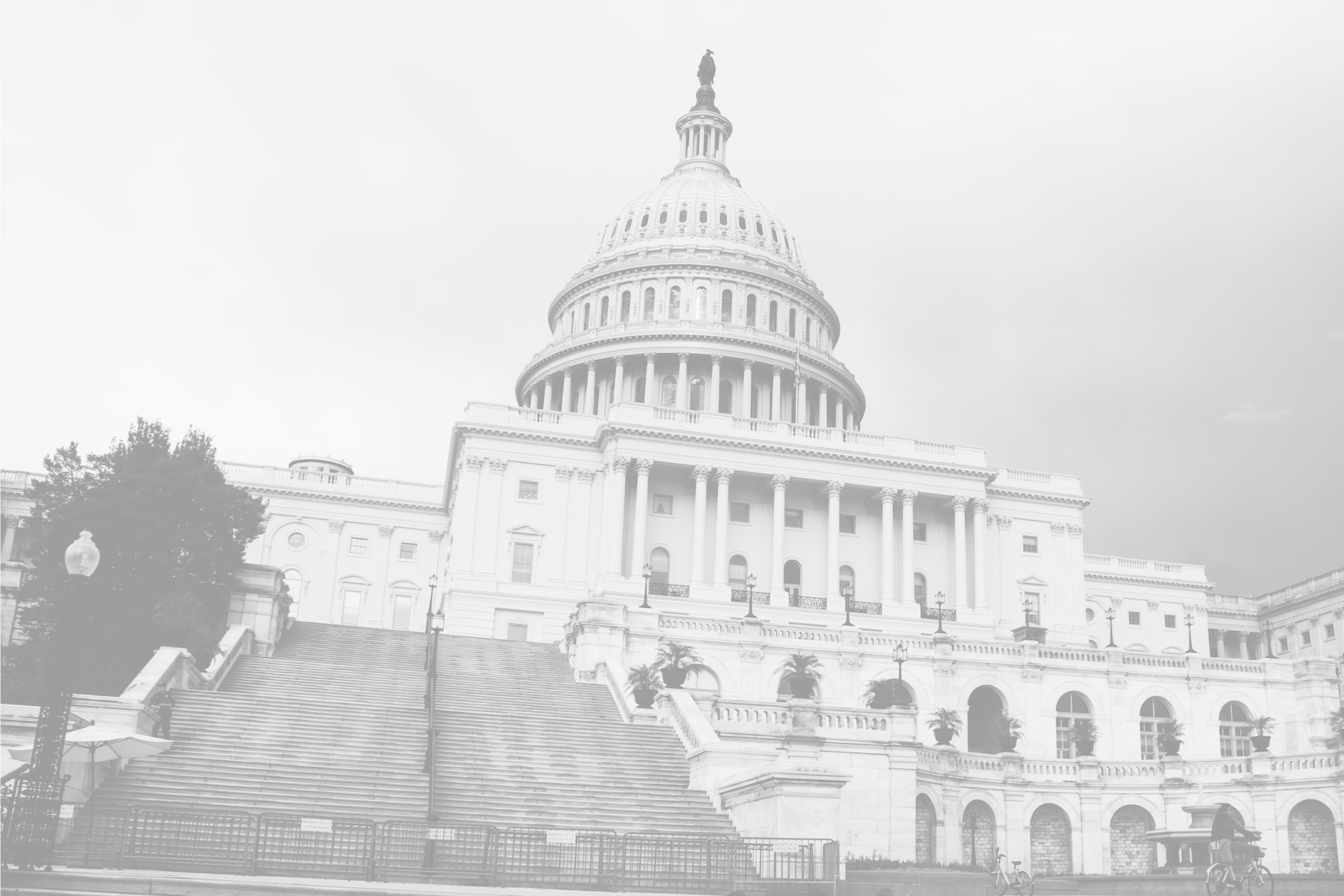
 Trusted Content
Trusted Content
As of 2024, the September 11th Victim Compensation Fund has paid over $14 billion in compensation to victims suffering or who have died from 9/11-related cancers and illnesses. In the aftermath of the 9/11 attacks on the World Trade Center and Pentagon, government funds have compensated more than 63,889 people for cancer and other serious illnesses resulting from 9/11 toxic dust at Ground Zero that included chemicals, pulverized glass, asbestos, concrete, and more.
Pitta & Baione LLP represents individuals who were exposed to this lethal cocktail of chemicals and industrial debris in the aftermath of 9/11. If you lived, worked, studied, or visited south of Houston St. in the months following 9/11, and you have since developed certain cancers or other health ailments, you may be eligible for compensation and lifetime healthcare benefits under the James Zadroga 9/11 Health and Compensation Act.
For help recovering compensation for your 9/11-related cancer, contact the offices of Pitta & Baione LLP. We can help file your 9/11 cancer claim and cut through the red tape and bureaucratic hurdles that will stand in your way.
9/11-Related Cancer Information: The Basics
There are two federal benefits programs for which you may qualify if you were affected by 9/11.
On January 2, 2011, President Obama signed the James Zadroga 9/11 Health and Compensation Act of 2010 into law. The Act was named for James Zadroga, a former NYPD detective who died in 2006 from respiratory failure. The cause of death was linked to his exposure to the toxic dust at and around Ground Zero.
The Zadroga Act established and provided funding for two separate but related federal benefit programs: The World Trade Center Health Program (“WTCHP”) and the September 11th Victim Compensation Fund (“VCF”).
The September 11th Victim Compensation Fund provides financial compensation for pain and suffering, lost earnings, replacement services, and medical conditions caused by physical conditions related to 9/11. The VCF is fully funded through 2090. The VCF does not cover treatment for mental health conditions.
The World Trade Center Health Program provides free medical care, monitoring, and medication for certain physical and psychological conditions related to 9/11. Unlike the VCF, it does cover mental health care. Generally, participation in the WTCHP is necessary to file a VCF claim.
The Zadroga Act was temporarily renewed on December 18, 2015 and later made permanent on July 29, 2019 when President Trump signed into law The Never Forget the Heroes: James Zadroga, Ray Pfeifer, and Luis Alvarez Permanent Authorization of the September 11th Victim Compensation Fund.

For more information on 9/11 related cancer and 9/11 Victim Compensation, please contact Pitta & Baione LLP at 844-982-2667 or info@pittabaione.com.
Attorney advertising. Prior results do not guarantee a similar outcome.
Why Did 9/11 Cause Cancer?
The dust from Ground Zero, which spread throughout Lower Manhattan and to some areas of Brooklyn, New Jersey, and even Staten Island, contained many known carcinogens. These include soot, benzene, cement, asbestos, heavy metals, polycyclic aromatic hydrocarbons, and dioxins.
Inhaling the toxic dust from Ground Zero is linked to more concerns than decreased lung capacity, lung cancers, and trouble breathing. Ground Zero exposure may have created a damaging cycle of inflammatory T-cell production for those who spent extended time near Ground Zero.
In turn, this inflammation affects September 11 cancer casualties. Lead researcher Michael Oh, MD told The ASCO Post that inflammation is often tied to a worse prognosis in some cancer types, including prostate and breast cancer.
9/11 first responders cancer rates are as follows:
- 25% increased risk of prostate cancer
- 219% increased risk of thyroid cancer
- 41% increase in leukemia
However, an increased risk of cancer does not just affect first responders. Anyone who spent a significant amount of time south of Houston Street in the year following September 11, 2001 may have been exposed to the cancer-causing dust.
9/11 cancer rates also aren’t the only vital metric needing research — other illnesses and health conditions continue to plague survivors.
New York Fire Department research shows that about 9% of firefighters exposed to the dust at Ground Zero during the first response still report a persistent cough 20 years later. About 22% experience shortness of breath and 40% have chronic sinus problems or acid reflux.
Tests illustrate that firefighters who spent time at Ground Zero found their lung function declined at a rate 10 to 12 times the expected rate for the profession in the first year after 9/11.
How Many Cancer Cases Were Caused By 9/11?
There are nearly 34,000 known cancer cases among responders and others exposed to Ground Zero in the aftermath of 9/11, according to data from the World Trade Center Health Program. Even though over 20 years have passed since the 9/11 dust exposure, this number increases daily as more victims develop cancer.
Reports show that FDNY 9/11 cancer deaths surpass the casualties of the World Trade Center Attack over 20 years ago. 9/11 first responders are also 30% more likely to get certain cancers compared to their counterparts in the same age bracket.
How Soon Was Cancer Detected After Exposure to 9/11 Toxins?
Awareness of the health consequences associated with 9/11 toxin exposure began as early as 2002 when Dr. David Prezant of the NYC Fire Department wrote about the “World Trade Center cough” that many 9/11 firefighters he treated were suffering from. In 2012, some forms of cancer were added to the list of health conditions covered by the WTC Health Program. In 2013, prostate cancer was added to the list of covered health conditions.
Leukemia, prostate cancers, and thyroid cancers were some of the first forms of 9/11-related cancer to be diagnosed and connected to toxic dust exposure after September 11, 2001, as they have relatively low latency times.
How Many People Got Cancer From 9/11?
To date, there are 34,000 known 9/11 cancer cases. However, this number is expected to increase as more people get diagnosed with cancer caused by previous 9/11 dust exposure.
How Many Have Died From Cancer After 9/11?
According to June 2023 data from the WTC Health Program, 6,314 enrollees have since died. However, this number includes all 9/11 illnesses, not just cancer, as well as other causes of death.
There is a higher survival rate associated with the free cancer care provided by the WTC Health Program. 9/11 first responders who have developed cancer linked to Ground Zero exposure are currently estimated to have a 35% higher chance of survival than the average cancer patient in America. If you need help applying for coverage under the James Zadroga Act, do not hesitate to reach out to the office of Pitta & Baione LLP.
Early detection and access to paid cancer care saves lives. If you were exposed to the 9/11 dust cloud, our attorneys can help you apply for the financial assistance and medical attention that you’re entitled to.
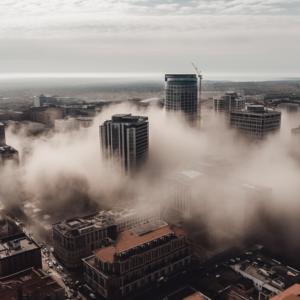
The 9/11 Dust Cloud
The WTC Health Program estimates that around 400,000 people were exposed to the toxic dust and other physical and mental health risks following the attacks of 9/11.
Many of these people were not at Ground Zero during the attack but lived, worked, or went to school South of Houston in the year following 2001. If you are one of them, or if you are concerned about exposure to 9/11 debris during cleanup and storage efforts, contact a 9/11 cancer lawyer to learn about the benefits that may be available to you.
What Was in the Toxic Dust Cloud?
World Trade Center dust included cement dust particles, heavy metals, up to 2,000 pounds of asbestos, and synthetic vitreous fibers (SVFs). Carcinogens like cadmium and polychlorinated biphenyls were also present in the cloud.
The debris was also made up of “persistent organic pollutants” like dioxins, which are known to cause cancer. Beyond that, other toxins like polyaromatic hydrocarbons (PAHs) were present as byproducts of jet fuel.
The fires burned for 99 days after the attack, and would at times re-ignite on occasion after the period, causing a fresh release of toxic chemicals, fumes, smoke, and dust. These chemicals resulted in an increased cancer risk and prevalence of other illnesses. Similar chemicals were also released during the plane crash in Somerset County in Shanksville, PA.
9/11 Cleanup: What To Know
The city of New York estimates at least 91,000 people assisted with early cleanup efforts at the site of Ground Zero. The long-term health risks among this group, including others who lived and worked in the Lower Manhattan area, are still being studied and understood.
How Long Did It Take To Clean Up 9/11?
The initial cleanup period lasted for ten months. Work on Ground Zero was ongoing for 24 hours a day. By May, the last piece of steel was removed ceremonially, but the effects of the day would linger longer.
About 1,944 steel pieces were turned into memorials, of which artifacts were shipped to all 50 states. The rest of the debris, about 1.8 million tons, was then shipped to Fresh Kills Landfill on Staten Island. The landfill was previously closed but reopened for the task.
While the landfill is under consideration to be redeveloped as a park, residents of Staten Island say that exposure to 9/11 debris stored there has increased their own risk of cancers. The city health department has yet to prove or share a conclusive link, but worrisome reports are trickling in.
A report from January 2020 compared incidence rates for 17 cancers in the area surrounding Fresh Kills to the rest of Staten Island and New York City. Between 1995 and 2015, adult residents of Staten Island suffered from certain cancers, especially bladder, breast, kidney, non-Hodgkin lymphoma, and thyroid, at higher rates than adults in other boroughs. Thyroid and bladder cancer rates in particular were found to be more common near the Fresh Kills former landfill site between the years of 2005 and 2015.
Problems With Clean Up
Many of the problems with the cleanup were linked to improper information and safety. Some responders and cleanup workers report not being given masks, respirators, or proper PPE to conduct the job.
As fires burned and toxic dust piled up, this initial exposure led to many cases of illnesses later on. Residents and workers were not warned properly about the risks of the exposure, leading to many developing cancer after 9/11.
Cancer After 9/11
Wall Street re-opened on September 17, 2001. While cleanup efforts were carried out, many people adjacent to the site were exposed to the risks of Ground Zero. Legal and communication workers, janitorial workers, educators, students, residents, volunteers, and first responders were all exposed to the site South of Houston.
Many of those people have since developed early-onset cancers such as leukemia, thyroid, and prostate cancer. Other cancers with a longer latency time, like mesothelioma, are expected to arise in recent years.

9/11 Cancer List
Because of the size and scope of the 9/11 dust cloud, the varying lengths of exposure, plus other contributing factors such as a delay in cancerous growth, it can be difficult to prove a direct link between exposure to a certain chemical and the condition. This is just one reason why roughly 90% of VCF claimants have found working with a legal expert helpful in order to apply for compensation.
The following are just some of the 9/11 cancer types for which benefits are available:
Lung Cancer
Exposure to asbestos, one of the risk factors prevalent in the 9/11 dust cloud, is linked to the development of lung cancer. Lung cancer and the more aggressive mesothelioma, is a slower-growing disease. Many researchers believe that the full toll of lung cancer for 9/11 survivors has yet to be diagnosed.
Leukemia
The Leukemia & Lymphoma Society reports that 9/11 survivors have a 41% higher chance of developing leukemia than the average American citizen of the same age.
Brain Cancer
Secondary brain cancers are more common in adults. Additionally, it tends to occur in people with a history of another cancer diagnosis.
For this reason, brain cancer development may be linked to a previous cancer diagnosis linked to 9/11. Pitta & Baione LLP was instrumental in securing a $1.7 million award for a New York State Supreme Court employee who was disabled by a 9/11-related brain cancer.
Prostate Cancer
The average age for diagnosis of this slow-growing cancer in men is 66. However, a 2019 study from The Tisch Cancer Institute shows that a disproportionate number of 9/11 first responders developed aggressive, faster-growing versions of the disease. Currently, survivors and responders are thought to have a 25% higher chance of developing prostate cancer.
Colon Cancer
Colon cancer is often a secondary cancer for those diagnosed with a previous cancer, although it may also occur alone. If you or a loved one has been diagnosed with colon cancer after time spent at or around Ground Zero, do not ignore the possible connection.
Pitta & Baione LLP was able to secure over $770,000 for a union carpenter who built temporary structures at Ground Zero as a responder, and who later developed disabling 9/11 colon cancer.
Pancreatic Cancer
An estimated 64,050 people in the United States will be diagnosed with pancreatic cancer in 2023, according to the American Cancer Society. If you are one of them and spent time living or working near the site of the World Trade Center after 9/11, you may be eligible to receive benefits and compensation.
Kidney Cancer
Cadmium located in the 9/11 dust cloud is toxic to the kidneys, contributing to heightened cancer risk. Since the kidneys also filter waste from the body, damage to the kidneys may exacerbate other health troubles.
The exposure to cadmium is particularly dangerous for those who were at or around World Trade on or after 9/11. As such, 9/11 kidney cancer is considered a covered condition under the WTCHP.
Uterine Cancer
For over two decades, female responders and women who lived and worked South of Houston post-9/11 were ineligible to receive benefits for uterine cancer, also known as endometrial cancer.
Since many first responders and victims were male, female first responders, workers, and others exposed to 9/11 toxic chemicals didn’t receive adequate consideration during the initial phases of cancer compensation.
Pitta & Baione LLP fought hard to push for the inclusion of uterine cancer on the list of covered 9/11 cancers. Finally, the WTCHP recognizes the damage done to women who have developed 9/11 uterine. Federally funded compensation and medical monitoring are now available.
Thyroid Cancer
Thyroid cancer is one of the most common kinds of cancer linked to exposure to Ground Zero after 9/11. Survivors, first responders, and those near the area after the attack have a 219% higher chance of developing thyroid cancer.
Luckily, 9/11 cancer-related deaths due to thyroid cancer are rarer than with other diagnoses, but your quality of life can still be greatly impacted.
Skin Cancer
Skin cancers, both melanoma and non-melanoma, have been diagnosed at a frequent rate with a connection to 9/11. One of the more common kinds of cancer experienced by 9/11 survivors is skin cancer. When diagnosed early, 9/11 skin cancer is usually treatable.
Bladder Cancer
While your doctor may not immediately link a diagnosis of bladder cancer and exposure to the World Trade Center after 9/11, the WTCHP has found that 9/11 bladder cancer is one of the most common disorders among responders and survivors. Its development has been linked to exposure to certain industrial chemicals, like those found in the dust cloud.
Multiple Myeloma
Multiple myeloma is a cancer of plasma cells in the body that has been linked to 9/11 first responders. Symptoms include bone pain, bone weakness, and bone fractures. When caught early, chemotherapy has been successful in treating 9/11 multiple myeloma.
Digestive System Cancer
Cancers of the colon, esophagus, live and intrahepatic bile ducts, rectosigmoid junction, rectum, retroperitoneum and peritoneum, stomach, and other areas of the digestive tract have all been linked to inhaling chemicals in the dust cloud.
Anyone who was present in Lower Manhattan below Canal Street, who worked the Fresh Kills landfill on Staten Island, or assisted with debris removal may be eligible for free medical monitoring through the WTC Health Program.
Eye and Orbit Cancer
Diagnosing eye cancer is difficult because many of the early symptoms, such as floaters, spots, or blurry vision are common in healthy eyes.
Many 9/11 first responders developed eye melanomas. With time, the WTCHP discovered that many developed eye and orbit cancers as well.
Head and Neck Cancer
Exposure to chemicals as well as trauma-influenced behaviors like smoking and having an increased number of sexual partners has been linked to higher rates of 9/11 head and neck cancer.
Some of the most frequently diagnosed head and neck cancers among 9/11 survivors include oral cavity, oropharyngeal, and laryngeal cancers, according to a 2019 Rutgers study.
Respiratory System Cancer
Respiratory cancers and other difficulties breathing are some of the most acute linkages between exposure to the microscopic glass, asbestos, dust, cement, carcinogenic chemicals, smoke, and more from 9/11.
Soft Tissue Cancer
Sarcoma is a rare form of cancer found in the bones and soft tissues of the body. There are over 70 types of sarcomas, but only two types are currently labeled as covered under the World Trade Center Health Program. They are myeloid sarcoma, a subcategory of myeloid leukemia, and sarcoma of the liver.
Other types of sarcomas may also qualify under the WTCHP’s rare cancers coverage program. In this case, the WTCHP may provide coverage for any kind of cancer that occurs in less than 15 cases per 100,000 persons per year (based on age-adjusted 2005-2009 average annual data).

9/11 Illness List
In addition to cancers, other illnesses have been linked to exposure to 9/11 toxic dust.
They are:
Aerodigestive (Airway and Digestive) Disorders
Respiratory illnesses and digestive disorders are among the most common conditions diagnosed among 9/11 responders:
- Asthma: Data from the New York City government shares that five to six years after the attacks, 8.6% of passersby and 8.4% of office workers South of Houston developed asthma. Respiratory issues were some of the first to pop up, due to exposure to the dust cloud on city streets and build-up in buildings and offices.
- Gastroesophageal Reflux Disease (GERD): Roughly 40% of New York firefighters who were first responders report chronic sinus problems and/or acid reflux.
- Sleep Apnea: According to a 2014 study, people present for 9/11 at the World Trade Center are more likely to develop severe sleep apnea. Other 9/11-related conditions linked to obstructive sleep apnea include gastroesophageal reflux disease (GERD), chronic rhinosinusitis, and post-traumatic stress disorder (PTSD).
- Chronic Rhinosinusitis and Nasal Inflammation: Research from the New York Fire Department says that 9% of firefighters exposed to the 9/11 dust still report a persistent cough, and 22% report lasting shortness of breath.
Psychological Effects
While the VCF does not compensate for PTSD or any other psychological effects, the World Trade Center Health Program offers free healthcare monitoring and benefits for both physical and psychological conditions.
Covered conditions of the WTCHP include:
- Post-Traumatic Stress Disorder (PTSD). According to NYC data, passersby during 9/11 had the highest rate of probable PTSD at 23.2% prevalence out of all groups surveyed, including rescue and recovery workers and residents. Passersby on 9/11 are also most likely to suffer from chronic post-traumatic stress symptoms, as reported during the periods of 2003 to 2004 and 2006 to 2007.
- Depression: Depression can be a stressor for other health concerns — not to mention a serious psychological issue on its own. People who suffered a loss from 9/11 were twice as likely to be diagnosed with depression as those who did not.
- Anxiety: Patients with loved ones in danger on 9/11 or who knew someone involved in the rescue and recovery effort were twice as likely to develop an anxiety disorder, according to NYC data.
- Substance Abuse: Alcohol abuse was linked to psychological trauma for up to four years post-9/11. Substance abuse is also considered an additional risk factor for the development of certain 9/11-related cancers.
Neurological Impact
The following neurological issues are under investigation but have yet to be officially connected to 9/11 by the WTCHP:
- Mild Cognitive Impairment: Research suggests a link between diagnoses of mild cognitive impairment in older Americans and exposure to 9/11. Those who witnessed the event firsthand tend to present with more cases.
- Two potential pathways for cognitive impairment, at times a precursor to dementia, have been hypothesized. Scientists are studying chronic PTSD (from the involvement in the tragedy or rescue and recovery efforts), and repeated exposure to toxic dust and chemical particulate matter to explain the rising rate of MCI in 9/11 survivors and responders.
- Peripheral Neuropathy: Both the initial collapse of the World Trade Center and the following ten-month recovery and cleanup period exposed New Yorkers to high amounts of undesirable chemicals. These included lead, aluminum, cadmium, manganese, tin, and complex hydrocarbons, specifically polychlorinated biphenyl (PCB), dioxins, pesticides, solvents, and polycyclic aromatic hydrocarbons (PAHs).
- Many of the above chemicals are known causes of peripheral neuropathy and other neurodegenerative diseases. Rates of these conditions have arisen at alarming rates among 9/11 workers and responders.
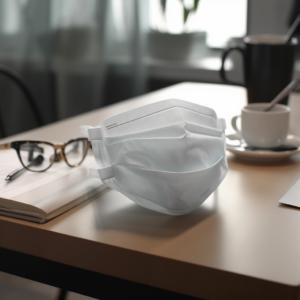
WTC Health Program: What To Know
The World Trade Center Health Program was established by the James Zadroga 9/11 Health and Compensation Act of 2010. This law established both the Victims Compensation Fund and the World Trade Center Health Program.
Many legal battles have been necessary to get this series of federally-funded benefits to the victims of 9/11. As of June 2023, there are 85,954 responders and 39,540 survivors enrolled to receive benefits under the WTCHP. If you need legal assistance enrolling yourself or a loved one in this program, the experts at Pitta & Baione LLP can help.
What The WTCHP Covers
The WTCHP is a federal program run by The National Institute for Occupational Safety and Health (NIOSH). Federal funds have been allocated to provide no-cost medical monitoring and treatment for certified WTC-related health conditions to individuals directly affected by the attacks in New York, Pennsylvania, and the Pentagon.
In order to be covered, treatment has to be provided by a WTC Health Program affiliated provider or pharmacy. The condition must be certified under the James Zadroga Act.
The following certification categories are considered:
- Aerodigestive disorders
- Cancer
- Mental health needs
- Musculoskeletal and acute traumatic injuries
Once these conditions are met, members of the WTCHP can receive treatment and medical monitoring without paying deductibles, co-payments, or out-of-pocket costs. In addition, the WTCHP funds medical research into covered conditions.
Who Can Access Treatment From the WTC?
In order to access compensation, 9/11 cancer patients must demonstrate their exposure to the dust cloud at and around Ground Zero. Certain areas of Lower Manhattan and a small part of Brooklyn may qualify.
The following categories of people can access treatment from the WTCHP:
- Survivors: Survivors encompass those who worked, lived, or went to school (including daycare and adult daycare) in the NYC Disaster Area from September 11, 2001, to July 31, 2002.
- Responders: Responders include both first responders and those involved in response and cleanup efforts in the affected area between September 11, 2001, and July 31, 2002.
How To Apply to the World Trade Center Health Program: 3 Steps
You do not need an attorney to apply for coverage as a victim of 9/11, but as the claims process can be complex, nearly 90% of all VCF claimants are currently represented by attorneys.
Follow these steps to apply for the World Trade Center Health Program:
1. Check for Eligibility
Inclusive of the New York cohort, there are four groups eligible for coverage under the WTCHP. They are FDNY Responders, WTC General Responders, Pentagon and Shanksville Responders, and WTC Survivors.
The category of WTC Survivors expands to include those who lived in, worked, or went to school near the WTC and 9/11 dust cloud.
2. Gather Supporting Documents
You will need to demonstrate your eligibility with supporting evidence, depending on your personal classification from the previous step. Examples of evidence for inclusion can be addresses, timesheets, police memo books, awards, letters, communication from the Workers’ Compensation Board, and more.
In the event that you cannot provide documentation, you may still be able to qualify for the program through third-party attestation. A third party may be asked to confirm your details and provide information as to why you do not have records, and what you have done to try to locate them. If you need help gathering these documents and proving your eligibility for the WTCHP, do not be deterred.
Legal help is available. The lawyers at Pitta & Baione LLP troubleshoots support documentation issues for all qualified clients.
3. Complete the Application
Once you have completed your application, submit it along with your supporting documents online, in the mail, or via fax machine.
9/11 Victim Compensation Fund Claims: Helping Victims Heal
Pitta & Baione LLP has already recovered over $350 million for clients affected by the tragic events of 9/11 and its long-term health consequences. Our clients number first responders, current and former downtown residents, students, the loved ones of those lost to 9/11-related illnesses, and more.
Our firm was also instrumental in lobbying for legislation that would later become the Zadroga Act, slashing through red tape from the beginning to help affected New Yorkers access care and compensation for 9/11-induced cancer.
We have fought for expanded access to 9/11 victim benefits, and continue to provide legal services for those who have difficulty proving their claim.
Claims for Cancer-Related Illnesses
Under the Victims Compensation Fund (VCF), you may also be able to recover additional economic and non-economic damages through a 9/11 cancer lawsuit. Covered economic damages are quantifiable losses related to time out of work recovering from an injury or illness.
Examples of covered economic damages available include:
- Past, current, and future out-of-pocket healthcare costs (testing and evaluation bills, the cost of ongoing treatment, prescription medications, long-term care expenses, and more)
- Funeral, burial, and memorial costs
- Lost income, if you are unable to work due to your condition
- Past, current, and future unemployment benefits
- “Replacement” services for daily tasks you are no longer able to perform for yourself, including housekeeping, childcare, lawn maintenance, transportation services, or personal care
- Wrongful death awards for financial losses
In addition, the VCF provides certain damages for covered non-economic losses. These are available for a broader array of reasons but may be more difficult to quantify and prove.
Non-economic losses include financial compensation for:
- Chronic pain
- Emotional distress
- Inability to enjoy life
- Inability to function normally
Even if you have been able to retain your job, you may still qualify for payments due to non-economic losses, like chronic pain and loss of enjoyment. However, these kinds of financial awards are not guaranteed through the VCF. Many have found that they have substantially better outcomes when represented by a lawyer with experience building and presenting a case for federal compensation. Our seasoned experts do not take a fee from your case unless we win.
VCF Claims for Deceased Loved Ones
As New Yorkers, the attorneys at Pitta & Baione LLP were also impacted by the terrible events of 9/11. We use the full might of our legal expertise to help fellow New Yorkers and those who have lost loved ones in the tragedy.
The VCF provides financial awards to those who lose loved ones due to 9/11 and 9/11-caused illnesses. We provide representation to claim your family’s VCF award for free. As a 9/11 law firm, we also provide free in-house probate and estate counsel for claims that involve the estates of deceased 9/11 victims. Our team also can provide free guidance on claims involving the Veterans Trust Fund.
Pitta & Baione LLP will not charge you for our legal services if you need help recovering a VCF claim on behalf of a deceased loved one. We are available to help you in the wake of this loss.
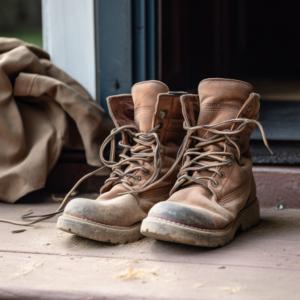
Reach Out for a Free 9/11 Cancer Claim Consultation
Pitta & Baione LLP is a holistic 9/11 law firm that provides services to survivors and responders who need access to financial compensation. Receiving World Trade Center Health Program benefits can literally be the difference between life and death for our clients, as expanded access to paid-for cancer care saves lives.
We are proud to ensure every eligible New Yorker receives the medical care they deserve after exposure to the tragedy and toxic chemicals of 9/11. We also help survivors and responders access their VCF benefits, including economic losses from illnesses and non-economic damages to help ease the burden of what they’ve already been through.
Finally, we help those who have lost loved ones access VCF benefits for the deceased without charge, in support of the experience we’ve all shared as New Yorkers living through 9/11.
Our firm is a three-part affiliate umbrella with influence and reach into Washington D.C. and our two New York offices. In this way, Pitta & Baione LLP is confident in our ability to secure the highest possible awards for our clients, as well as connect them with much-needed additional recourses. If you need help with your 9/11 cancer claim, contact us today for a complimentary consultation about your case.
